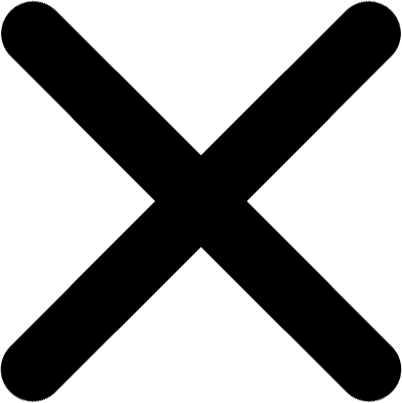Pharmaceutical Corruption Media Articles
Below are key excerpts of revealing news articles on pharmaceutical industry corruption from reliable news media sources. If any link fails to function, a paywall blocks full access, or the article is no longer available, try these digital tools.
For further exploration, delve into our comprehensive Health and Food Corruption Information Center.
An advertising agency that helped market the blockbuster painkiller OxyContin will pay $350 million to states ravaged by the nation’s opioid crisis. Attorneys general from multiple states alleged that Publicis Health developed “unfair and deceptive” marketing campaigns aimed at persuading doctors to prescribe the addictive drug for longer periods of time and at higher doses. The company’s client was Purdue Pharma, the Connecticut drugmaker accused in lawsuits of helping ignite the epidemic through aggressive marketing and sales of OxyContin. Publicis, a subsidiary of French ad giant Publicis Groupe, settled with 50 states and D.C. Under the agreements, Publicis Health will stop accepting work related to prescription opioids and must release thousands of internal documents chronicling its dealings with companies such as Purdue. It is the first settlement with an advertising agency connected to the opioid crisis, according to the New York attorney general’s office. “Publicis was responsible for creating advertisements and materials, such as pamphlets and brochures that promoted OxyContin as safe and unable to be abused, even though this claim was not true,” according to a news release from the office of New York Attorney General Letitia James. Drug overdoses killed nearly 110,000 people in the United States in 2022, a record high, according to federal death statistics.
Note: For more along these lines, see concise summaries of deeply revealing news articles on Big Pharma corruption from reliable major media sources.
Researchers have long known that any single antidepressant drug is little more effective than a placebo in the majority of trials, shown to be less effective than a placebo in some studies, and generally found to be “clinically negligible” with respect to depression remission, while often resulting in severe adverse effects; for example, resulting in a higher percentage of sexual dysfunction than depression remission. However, for nearly twenty years, psychiatry and Big Pharma have told us that while one antidepressant may not work for the majority of patients, in the “real world,” doctors provide patients who have been failed by their initial antidepressant with another antidepressant, and if that fails, still another; and that this real-world treatment is successful for nearly 70% of patients. The problem with this “nearly 70%” story is that the research that has been used to justify it, a 2006 report on the results of the Sequenced Treatment Alternatives to Relieve Depression (STAR*D), has long been disputed by researchers. Moreover, a recent reanalysis of previously undisclosed data reveals that STAR*D, owing to scientific misconduct that dramatically inflated remission rates, may go down in US medical history as one of its most harmful scandals. Even [STAR*D's] fabricated 67% depression remission rate should never have been celebrated. 85% of depressed individuals who go without somatic treatments spontaneously recover within 1 year.
Note: Read more important news articles we've summarized on medical and scientific corruption regarding antidepressants. For more along these lines, see concise summaries of deeply revealing news articles on Big Pharma corruption from reliable major media sources.
Sixty percent of US physicians serving as panel and task force members for the American Psychiatric Association’s official manual of psychiatric disorders received payments from industry totalling $14.24m, finds a study published by The BMJ. Because of the enormous influence of diagnostic and treatment guidelines, the researchers say their findings “raise questions about the editorial independence of this diagnostic manual.” Often referred to as the ‘bible’ of psychiatric disorders, the Diagnostic and Statistical Manual of Mental Disorders, fifth edition, text revision (DSM-5-TR) is the latest edition of the guide that doctors use to diagnose and treat patients. It is thus critical that authors of this psychiatric taxonomy should be free of industry ties. But until the development of Open Payments ... it wasn't possible to determine the amount of monies received by authors of diagnostic and clinical practice guidelines. Their analysis included 92 physicians based in the US who served as members of either a panel (86) or task force (6) on the DSM-5-TR from 2016-19. Of these 92 individuals, 55 (60%) received payments from industry. Collectively, these panel members received a total of $14.24m (£11.21m; €12.96m). The most common types of payment were for food and beverages (91%), followed by travel (69%) and consulting (69%). The greatest proportion of compensation by category of payment was for research funding (70%). To ensure unbiased, evidence based mental health practice, there should be a rebuttable presumption of prohibiting financial conflicts of interest among the panel and task force members.
Note: A recent study found that 80% of the global population will be treated for mental illness at some point in their lives, and that their lives are worse in many ways after receiving diagnosis and treatment. For more along these lines, see concise summaries of deeply revealing news articles on health and Big Pharma profiteering from reliable major media sources.
Victims who suffered life-changing injuries from the Oxford-AstraZeneca Covid vaccine say they have faced censorship on social media when trying to discuss their symptoms. The UK-based pharmaceutical giant is being sued in the High Court in a test case by a father-of-two who suffered a significant permanent brain injury as a result of a blood clot after receiving the jab in spring 2021. A second claim is also being brought by the widower and two young children of a woman who died after having the jab. Some who have experienced serious adverse reactions from the AstraZeneca vaccine ... have been given “warnings” on social media websites such as Facebook when trying to talk to one another about their experiences. They say they are being forced to “self censor” and speak in code to avoid having their support groups shut down. In one instance, YouTube attempted to censor a video of testimony given by lawyers to the Covid Inquiry about vaccines, flagging the clip as a violation of its “medical misinformation policy”. UK CV Family, a private Facebook group with 1.2k members for people left injured or bereaved from Covid vaccines, was started in November 2021 by Charlet Crichton after she suffered an adverse reaction from the AstraZeneca jab. Facebook blocked Ms Crichton from commenting at one stage “to prevent misuse” and there were occasions where her account was temporarily banned because her “activity didn’t follow our community standards”.
Note: For more along these lines, see concise summaries of deeply revealing news articles on government COVID vaccines and media manipulation from reliable sources.
Sidney M. Wolfe, an American physician turned activist who relentlessly lobbied against drug companies and the US Food and Drug Administration, died on Monday in his Washington home. He was 86. Wolfe ... co-founded the Public Citizen’s Health Research Group, which “promotes research-based, system-wide changes in health-care policy and drug safety,” according to the group’s website. He also served as the director and senior adviser of the non-profit, where he crusaded against FDA rulings on more than two dozen dangerous or ineffective drugs until they were yanked off the market. In an op-ed published in HuffPost in 2011, Wolfe ridiculed the FDA for being “cautious on food safety — reckless on prescription drug safety.” The banned medicines include the diabetes drug phenformin, which was linked to hundreds of deaths and sold under the trade names DBI and Meltrol in the US for 20 years. Wolfe was also responsible for the banning of the anti-inflammatory Vioxx ... which he warned caused serious heart damage years before it was taken off the market — as well as the anti-diarrheal alosetron. His group also successfully petitioned federal regulators to include a warning on aspirin bottles about Reye’s syndrome, a rare but potentially fatal condition that causes swelling in the liver and brain. In addition, Wolfe was a fierce foe of silicone gel-filled breast implants for breast augmentation and reconstruction surgeries, claiming in the 1980s that they cause cancer.
Note: Read the full remembrance of Dr. Sidney Wolfe’s legacy. His leadership helped remove 28 dangerous medications off the market, and paved the way for “vital and path-breaking research and advocacy on doctor discipline, mental health, tobacco, pharmaceutical marketing, drug company payments to doctors, medical devices, health insurance and the imperative of Medicare for All, unnecessary Cesarean sections, unregulated supplements, medical resident work hours, and more.” For more along these lines, see concise summaries of deeply revealing news articles on health and Big Pharma corruption from reliable major media sources.
Poison control centers across the US say they are seeing a steep increase in calls related to semaglutide, an injected medication used for diabetes and weight loss, with some people reporting symptoms related to accidental overdoses. Some have even needed to be hospitalized for severe nausea, vomiting and stomach pain, but their cases seem to have resolved after they were given intravenous fluids and medications to control nausea. From January through November, the America’s Poison Centers reports nearly 3,000 calls involving semaglutide, an increase of more than 15-fold since 2019. In 94% of calls, this medication was the only substance reported. In most of the calls, people reported dosing errors, said Dr. Kait Brown, clinical managing director of the association. “Oftentimes, it’s a person who maybe accidentally took a double dose or took the wrong dose,” Brown said. Semaglutide was approved by the US Food and Drug Administration in 2017. It is sold as Ozempic when used for diabetes and Wegovy when used for weight loss. Even when used as directed by a doctor, people can have stomach and bowel side effects, including nausea, vomiting and constipation, especially when they start the drugs. After celebrities began openly embracing Ozempic on social media in 2022 as a way to lose weight, demand overwhelmed supply. There’s no specific antidote for a semaglutide overdose.
Note: The money behind the makers of weight-loss drugs is staggering, with the economic value of Wegovy's Novo Nordisk soaring to over $420 billionexceeding the entire GDP of Denmark, its home country. Read more on the significant adverse effects associated with these drugs. For more along these lines, see concise summaries of deeply revealing news articles on Big Pharma corruption from reliable major media sources.
If you’ve ever found yourself absentmindedly humming the “oh-oh-oh-Ozempic” jingle, you have David Paton to blame. The singer-songwriter ... co-wrote “Magic” — the 1975 hit for his band Pilot that he reworked and sang for the trendy weight-loss drug’s TV commercials, which play incessantly. “I have heard from doctors about patients not remembering the names of drugs but singing the songs,” a former product manager for drug companies that include Merck and Pfizer, [said]. It can cost billions of dollars to develop a pharmaceutical, so promoting it is essential. And that all starts with the name. “We try to craft a name that [has] five to nine letters and two to four syllables.” But it even comes down to the exact letters. “Let’s say there is an oral drug instead of an injectable, we’ll explore something that sounds liquidy or has an O in it,” Fernando Fernandez, managing director of BX: Brand Experience Design Group, [said]. “If we expect a product to have an extra level of efficacy, we might put an X in the name.” Consumers like taking drugs with the letter Z, which may have played a role in the naming of Ozempic and Zepbound. According to the Canadian Medical Journal, the letters X, Y and Z all impart a “high tech, sciency” [sic] feeling to drugs such as the sleeping medication Xanax. “People have hesitancy about taking drugs,” a medical advertising veteran told The Post. “If they don’t have diabetes, they wonder why they are taking a diabetes drug to lose weight. The weight-loss drug has to be called something different, even though it is very close to being the same thing. The name Wegovy is playful and memorable and obviously works.”
Note: The money behind the makers of weight-loss drugs is staggering, while concerns grow about the significant adverse effects of these drugs. For more along these lines, see concise summaries of deeply revealing news articles on Big Pharma profiteering from reliable major media sources.
The nation’s largest pharmacy chains have handed over Americans’ prescription records to police and government investigators without a warrant, a congressional investigation found, raising concerns about threats to medical privacy. Though some of the chains require their lawyers to review law enforcement requests, three of the largest — CVS Health, Kroger and Rite Aid, with a combined 60,000 locations nationwide — said they allow pharmacy staff members to hand over customers’ medical records in the store. Pharmacies’ records hold some of the most intimate details of their customers’ personal lives, including years-old medical conditions and the prescriptions they take for mental health and birth control. Because the chains often share records across all locations, a pharmacy in one state can access a person’s medical history from states with more-restrictive laws. The Health Insurance Portability and Accountability Act, or HIPAA, regulates how health information is used and exchanged among “covered entities” such as hospitals and doctor’s offices. But the law gives pharmacies leeway as to what legal standard they require before disclosing medical records to law enforcement. In briefings, officials with eight American pharmacy giants — Walgreens Boots Alliance, CVS, Walmart, Rite Aid, Kroger, Cigna, Optum Rx and Amazon Pharmacy — told congressional investigators that they required only a subpoena, not a warrant, to share the records.
Note: For more along these lines, see concise summaries of deeply revealing news articles on corporate corruption and the disappearance of privacy from reliable major media sources.
A New Zealand man was recently arrested after allegedly illegally accessing COVID-19 vaccine data from the country's health agency. Barry Young, 56, a former IT employee at Te Whatu Ora, the country's health agency, was arrested and accused of illegally obtaining COVID-19 vaccine data and sharing it on the internet. Young appeared on Infowars, where he was interviewed by ... Alex Jones. "I just looked at the data and what I was seeing, since the rollout, it just blew my mind. I was just seeing more and more people dying that shouldn't have been dying. It was just obvious," Young told Jones. The incident comes as COVID-19 vaccine skeptics have continued to question the efficacy of the inoculation. Texas Attorney General Ken Paxton recently announced that he was suing vaccine manufacturer Pfizer "for unlawfully misrepresenting the effectiveness of the company's COVID-19 vaccine and attempting to censor public discussion of the product." During the interview with Infowars, Young explained that he had suspicions about the COVID-19 vaccine in New Zealand since its rollout. "I want people to analyze this, I want people to look at it...we need to open it up and the government needs to have an inquiry about it. Just bring it to the public's attention," Young said.
Note: U.S.-based genomics scientist Kevin McKernan had uploaded Barry Young's data onto a file hosting service, MEGA, only to have his whole account deleted by MEGA overnight. For more along these lines, see concise summaries of deeply revealing news articles on COVID vaccine problems from reliable major media sources.
Medical experts and politicians have called for the amount of antidepressants being prescribed to people across the UK to be reduced in an open letter to the government. The letter coincides with the launch of the all-party parliamentary group Beyond Pills, which aims to reduce what it calls the UK healthcare system’s over-reliance on prescription medication. A total of 8.6 million patients in England were prescribed antidepressants in 2022-23, with the amount having almost doubled since 2011. Published in the British Medical Journal ... the letter says: “Rising antidepressant prescribing is not associated with an improvement in mental health outcomes at the population level, which, according to some measures, have worsened as antidepressant prescribing has risen.” The letter goes on to say that reducing the rate of antidepressant prescriptions could be achieved through measures that includes stopping the prescribing of antidepressants for mild conditions, and funding and delivering a national 24-hour prescribed drug withdrawal helpline ... to help those experiencing withdrawal symptoms from prescription medication. [Former chief executive of NHS England, Nigel] Crisp said: “The high rate of prescribing of antidepressants over recent years is a clear example of over-medicalisation, where patients are often prescribed unnecessary and potentially harmful drugs instead of tackling the root causes of their suffering, such as loneliness, poverty or poor housing.
Note: Antidepressants are some of the most commonly prescribed medications, yet their significant risks are often withheld from public debate. For more along these lines, see concise summaries of deeply revealing news articles on health and Big Pharma corruption from reliable major media sources.
In 2010, Purdue Pharma replaced the original version of OxyContin, an extended-release oxycodone pill, with a reformulated product that was much harder to crush for snorting or injection. The reformulation of OxyContin was instead associated with an increase in deaths involving illicit opioids and, ultimately, an overall increase in fatal drug overdoses. Researchers ... found that death rates rose fastest in states where reformulation would have had the biggest impact. A new study by RAND Corporation senior economist David Powell extends those findings by showing that the reformulation of OxyContin also was associated with rising suicides among children and teenagers. The root cause of such perverse effects was the substitution that occurred after the old version of OxyContin was retired. Nonmedical users turned to black-market alternatives that were more dangerous because their potency was highly variable and unpredictable—a hazard that was compounded by the emergence of illicit fentanyl as a heroin booster and substitute. The fallout from the reformulation of OxyContin is one example of a broader tendency: Interventions aimed at reducing the harm caused by substance abuse frequently have the opposite effect. Based on interstate differences in nonmedical use of OxyContin prior to 2010, Powell estimates that "the reformulation of OxyContin can explain 49% of the rise in child suicides."
Note: More than 107,000 people in the United States died due to opioid overdoses in 2021. For more along these lines, see concise summaries of deeply revealing news articles on Big Pharma corruption from reliable major media sources.
Drugmaker Novo Nordisk paid U.S. medical professionals at least $25.8 million over a decade in fees and expenses related to its weight-loss drugs [Wegovy and Saxenda], a Reuters analysis found. It concentrated that money on an elite group of obesity specialists who advocate giving its powerful and expensive drugs to tens of millions of Americans. Those payments are part of a campaign to convince U.S. doctors to make Wegovy one of the most widely prescribed drugs in history – and to persuade skeptical insurers to pay for it. Overall, at least 57 U.S. physicians each accepted at least $100,000 from Novo in payments associated with Wegovy or Saxenda. They were an influential group: Forty-one were obesity specialists who run weight-management clinics, work at academic hospitals, write obesity-treatment guidelines or hold top positions at medical societies, according to a Reuters review. "As sales grow, Medicare and the insurance industry come under intense pressure to pay for these hugely expensive drugs,” [Former dean of the US military's medical school Dr. Arthur] Kellermann said. “The end result is that everybody's healthcare costs go up.” U.S. and European regulators are studying whether GLP-1 drugs can cause suicidal thoughts. Reuters reported in September that at least 265 reports have been filed with the FDA since 2010 describing suicidal ideation or behavior in patients taking these drugs. Thirty-six reports described a death by suicide or suspected suicide.
Note: The money behind these obesity drug makers is staggering. The economic value of Novo Nordisk soared to over $420 billion, which exceeds the entire GDP of Denmark, its home country. As Lee Fang reports in this investigative piece on the issue, “The company is growing so fast, bringing in so many American dollars, that the Danish central bank recently devalued its currency to keep it in line with the euro.” For more along these lines, read the growing reports of concerning adverse side effects from these weight-loss drugs.
The Moderna misinformation reports, reported here for the first time, reveal what the pharmaceutical company is willing to do to shape public discourse around its marquee product. The mRNA COVID-19 vaccine catapulted the company to a $100 billion valuation. Behind the scenes, the marketing arm of the company has been working with former law enforcement officials and public health officials to monitor and influence vaccine policy. Key to this is a drug industry-funded NGO called Public Good Projects. PGP works closely with social media platforms, government agencies and news websites to confront the “root cause of vaccine hesitancy” by rapidly identifying and “shutting down misinformation.” A network of 45,000 healthcare professionals are given talking points “and advice on how to respond when vaccine misinformation goes mainstream”, according to an email from Moderna. An official training programme, developed by Moderna and PGP, alongside the American Board of Internal Medicine, [helps] healthcare workers identify medical misinformation. The online course, called the “Infodemic Training Program”, represents an official partnership between biopharma and the NGO world. Meanwhile, Moderna also retains Talkwalker which uses its “Blue Silk” artificial intelligence to monitor vaccine-related conversations across 150 million websites in nearly 200 countries. Claims are automatically deemed “misinformation” if they encourage vaccine hesitancy. As the pandemic abates, Moderna is, if anything, ratcheting up its surveillance operation.
Note: Strategies to silence and censor those who challenge mainstream narratives enable COVID vaccine pharmaceutical giants to downplay the significant, emerging health risks associated with the COVID shots. For more along these lines, see concise summaries of deeply revealing news articles on corporate corruption and the disappearance of privacy from reliable major media sources.
The U.S. was in a fit of Covid panic during Thanksgiving week two years ago. By month’s end, Pfizer’s stock-market value had surpassed $300 billion, up 50% from the start of the pandemic. Moderna’s shares had soared by more than 1,000% over the same period. In 2022 Pfizer became the first pharmaceutical company to book more than $100 billion in annual sales owing to government purchases of its vaccines and antiviral pill. Fast-forward to today. The pandemic is over. Demand for Covid vaccines and treatments has plunged. Pfizer’s total revenue has fallen more than 40% since last year. Earlier this month the company took a $5.5 billion write-off on its Covid products owing to “lower-than-expected demand.” Only 14% of American adults have received the latest updated booster shots. The jabs’ greatest benefit was in providing political leaders with the courage to lift destructive lockdowns and mask mandates. The vaccines were supposed to be a two-shot-and-done regimen, not blockbuster medicines that rung up tens of billions of dollars in sales every year with government support. Statins and diabetes medicines prevent heart attacks, but the government doesn’t run ads urging Americans to use Lipitor or Ozempic. The government’s vaccine boosterism ... has increased public cynicism toward pharmaceutical companies. Drug makers can dine out on any given medicine only for so long before needing to cook up another pharmaceutical bonanza.
Note: For more along these lines, see concise summaries of deeply revealing news articles on Big Pharma profiteering and coronavirus vaccines from reliable major media sources.
The Oxford-AstraZeneca Covid-19 vaccine has been branded “defective” in a multi-million pound landmark legal action that will suggest claims over its efficacy were “vastly overstated”. The pharmaceutical giant is being sued in the High Court in a test case by Jamie Scott, a father-of-two who suffered a significant permanent brain injury that has left him unable to work as a result of a blood clot after receiving the jab in April 2021. A second claim is being brought by the widower and two young children of 35-year-old Alpa Tailor, who died after having the jab made by AstraZeneca. The test cases could pave the way for as many as 80 damages claims worth an estimated £80 million over a new condition known as Vaccine-induced Immune Thrombocytopenia and Thrombosis (VITT) that was identified by specialists in the wake of the AstraZeneca Covid-19 vaccine rollout. In the months following the rollout, the potential serious side effect of the AstraZeneca jab was identified by scientists. Following this, it was recommended it no longer be given to the under-40s in the UK because the risk of receiving the jab outweighed the harm posed by Covid. Official figures ... show at least 81 deaths in the UK are suspected to have been linked to the adverse reaction that caused clotting in people who also had low blood platelets. Victims and their lawyers question the Government’s monitoring of the rollout and point out that ... Germany suspended the vaccine’s use for the under 60s at the end of March 2021.
Note: In the US, when current and former FDA advisers and academics asked the FDA to improve COVID vaccine labeling given the risk of severe vaccine injuries, the agency denied almost every single request. For more along these lines, see concise summaries of deeply revealing news articles on coronavirus vaccines from reliable major media sources.
Anti-vaccine advocates have recently made allegations against the Pfizer COVID-19 vaccine in hopes that the charges may hurt the drug manufacturer. In a series of posts on X (formerly Twitter), Steve Kirsch expressed concern over reports that Pfizer's vaccine was contaminated, saying that the Food and Drug Administration (FDA) "is now at a crossroads." "Either they admit that they knew about the plasma contamination, and failed to disclose that to the public and to the outside committees, or they can claim that they didn't know about it in which case Pfizer is liable. But we have the Pfizer documents that were given to the FDA so we know what the FDA got," Kirsch wrote. "I seriously doubt there's any disclosure of SV40 contamination. That means we have an adulterated vaccine and the FDA has to remove it from the market until the adulteration is fixed. If the FDA doesn't do that, they should face criminal prosecution for endangering the public, and not following the law." (SV40 refers to simian virus 40.) In his posts, Kirsch also references an incident in Michigan where a judge ruled that the manufacturer of the COVID-19 medication Remdesivir was no longer protected by the federal Public Readiness and Emergency Preparedness (PREP) Act after a man filed a lawsuit against the manufacturer. The man filed the suit after suffering strokes and an amputation following treatment with the drug, Remdesivir, which was contaminated with glass particles.
Note: While the data is still being uncovered, read an in-depth, scientific investigation into vaccine contamination, including concerns that Pfizer hid this contamination from regulators. For more along these lines, see concise summaries of deeply revealing news articles on coronavirus vaccines from reliable major media sources.
Pfizer-BioNTech delayed reporting vaccine-associated deaths among BNT162b2 clinical trial participants until after the U.S. Food and Drug Administration (FDA) issued an Emergency Use Authorization (EUA) for the product. The vaccine makers also failed to account for a large number of subjects who dropped out of the trial. Together, these strategies kept regulators and the public ignorant of a 3.7-fold increase in cardiac deaths among subjects who received the vaccine, according to analysis in the International Journal of Vaccine Theory, Practice, and Research. Investigators looked at each of the 38 deaths occurring between July 27, 2020, the start of phase 2/3 of the Pfizer-BioNTech vaccine trial, and March 13, 2021, the end date culminating in Pfizer-BioNTech’s 6-month interim report. This trial phase involved 44,060 subjects. Half received a dose of BNT162b2, half got a placebo. The trial was unusual because at week 20 after the FDA issued the EUA for the vaccine, trial subjects in the placebo group were allowed to switch to the vaccinated group and receive their first BNT162b2 shot. Of 20,794 unblinded placebo subjects in the Pfizer trial, 19,685 received at least one dose of BNT162b2. After 33 weeks the data revealed no significant difference between deaths in the vaccinated and placebo groups for the initial 20-week placebo-controlled portion of the trial. 79% of relevant deaths were not recorded in time to be included in Pfizer’s regulatory paperwork.
Note: Read our recent essay on Big Pharma corruption to further explore the significant harms associated with the COVID vaccine. For more along these lines, see concise summaries of deeply revealing news articles on Big Pharma corruption and coronavirus vaccines from reliable major media sources.
While I was out of town on business, I got a call from my dad who told me my husband Woody had been found hanging—dead at age 37. Woody wasn’t depressed and he hadn’t had a history of depression nor any other mental illness. His doctor had prescribed the antidepressant Zoloft to take the edge off. In the following weeks, I started to investigate, to try and understand why my perfectly normal husband had decided to end his life. The only thing that made sense ... Zoloft. Figuring out Zoloft’s dangers completely altered my life’s trajectory, absorbing years of my time. Today, I sit on one of the Food and Drug Administration (FDA) advisory committees that reviews new drugs coming to market. I initially thought that what I was learning about Zoloft was just an isolated issue with antidepressants. But I soon realized it was part of a much bigger, systemic problem with our nation’s drug safety system. The pharmaceutical industry is driven by commercial interests, not public health, and this problem is compounded by a lack of transparency, conflicts of interests, manipulation of clinical trials, and undue corporate influence across the government. Marketing companies ghostwrite pharmaceutical studies for academics who sometimes barely read the papers that get submitted to medical journals, and drug makers then cite these ghostwritten studies as peer-reviewed proof of their products’ safety and efficacy. The revolving door between Big Pharma and the FDA spins faster than the one between the Pentagon and the defense industry.
Note: This guest essay is written by Kim Witczak, a globally renowned advocate for pharmaceutical drug safety and FDA reform. Antidepressants have been found to increase the risk of suicide in some patients. For more along these lines, see concise summaries of deeply revealing news articles on health and Big Pharma corruption from reliable major media sources.
A new study published in JAMA Psychiatry finds that almost everyone will be treated for mental illness at some point in their lives and that their lives are worse in many ways after receiving diagnosis and treatment. About 80% of the population will be hospitalized or receive psychiatric drugs. After treatment, they are more likely to end up poor, unemployed, and receiving disability benefits, and they have worsening social connections. According to the researchers, the likelihood of getting prescribed psychiatric drugs during your lifetime was 82.6% (87.5% for women and 76.7% for men). The likelihood of being hospitalized for mental illness was 29.0% (31.8% for women and 26.1% for men). On average, the 80% who were treated for mental illness were already struggling before treatment. But after treatment, things only got worse. After treatment, “individuals with any mental health disorder were more likely to experience new socioeconomic difficulties, compared with control individuals from the general population,” the researchers write. “During follow-up, they were more likely to become unemployed or receive a disability benefit, to earn lower income, to be living alone, and to be unmarried.” There is copious evidence that antidepressant use leads to worse outcomes in the long term, even after controlling for the severity of depression and other factors. The adverse effects of the drugs lead to worse health outcomes for those taking them, and withdrawal symptoms prevent people from being able to discontinue.
Note: For more along these lines, see concise summaries of deeply revealing news articles on health from reliable major media sources. Then explore the excellent, reliable resources provided in our Health Information Center.
Companies that make popular weight loss shots like Ozempic and Mounjaro are starting to test a version for kids as young as six years old who suffer from obesity. Pharmaceutical company Eli Lilly signaled its plans to start clinical trials with Mounjaro for kids ages 6-11, over the weekend. Novo Nordisk, the company that makes Ozempic, reported it is in phase three of testing Saxenda, a version of its drug for children ages 6-12. The rates of obesity for children in the U.S. have tripled since the 1980s, affecting close to 15 million children nationwide, according to the CDC. This is nearly one in five kids. “It’s unlikely it’s going to do much if you just give them the medication. You need to instill all these behavior changes, lifestyle changes, talk about the diet, nutrition consults, the exercise,” said pediatrician Dr. Alison Mitzner. The concern for possible long-term impacts and side effects is one nutritionist Carrie Lupoli echoes. Both drug companies were sued earlier this year after a plaintiff said she suffered stomach paralysis. “It’s scary to me that we are going down that path instead of actually working on the root cause because we know weight gain is a symptom of health and hormones,” Lupoli said. CDC data shows kids may have gained weight twice as fast during the pandemic. Earlier this year, the American Academy of Pediatrics came out with new guidance that includes medication and surgery as suggestions for patients 12 and up suffering from obesity.
Note: The pharmaceutical companies behind these weight loss drugs are raking it in despite significant efficacy and safety concerns. Sales of Ozempic generated revenue of $3.2 billion in the second quarter (up from $2.1 billion during the same period in 2022) and Mounjaro generated $980 million in sales for the company during the second quarter (a 72% increase compared to the first quarter). For more along these lines, see concise summaries of deeply revealing news articles on Big Pharma corruption from reliable major media sources.
Important Note: Explore our full index to key excerpts of revealing major media news articles on several dozen engaging topics. And don't miss amazing excerpts from 20 of the most revealing news articles ever published.











































































